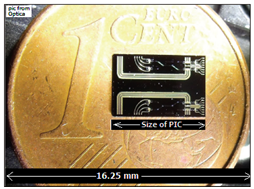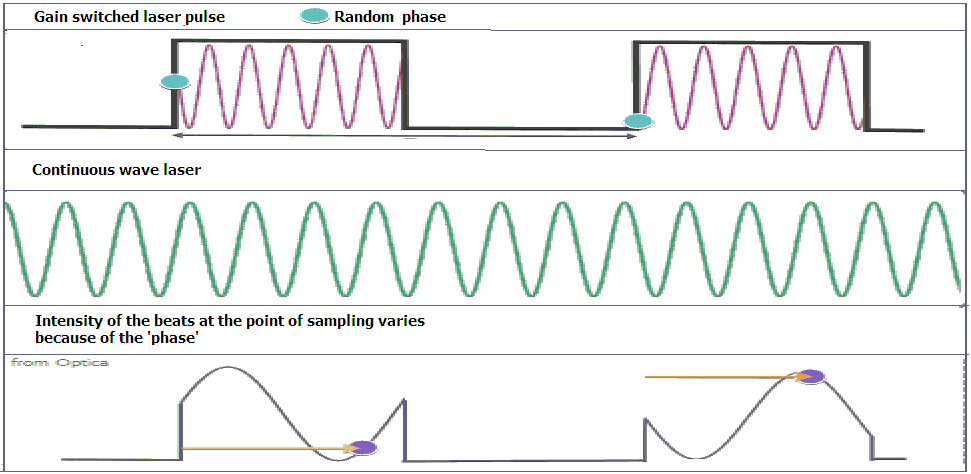Miniature devices can now create real random numbers, says S.Ananthanarayanan.
Random numbers have become important in daily life. They are at the heart of e-commerce and secure communications and also form the basis of statistical methods of solving problems in engineering and economics. And yet, truly random numbers are difficult to generate. A series of seemingly random numbers can still show patterns, and this can lead to frauds in e-commerce or errors in computations.
Carlos Abellani, Waldimar Amaya, David Domenech, Pascual Munoz, Jose Capmany, Stefano Longhi, Morgan W Michell and Valerio Pruneri, from the Institutes of Science and Technology and the Institute of Research and Advanced Studies at Barcelona, Polytechnic University and the firm, VLC Photonica at Valencia and the Institute of Photonics and Nanotechnology at Milan, describe in the Optical Society’s journal, Optica, a method of using quantum effects to generate truly random numbers, with the help of a miniature device that can be embedded in a mobile phone.
The operative quality of random numbers is that such numbers in a series cannot be predicted from the preceding ones, nor even any of the digits that appear in them. Once a random number has been exchanged by a pair of correspondents, they can base a code on this number and keep their exchanges confidential. Devices, like computers, which handle e-commerce transactions, thus routinely generate hundreds of large random numbers. The numbers, which are generated by a complex formula, are based on a ‘seed’ number to get started, and do pass many statistical tests of randomness. The numbers, however, are not truly random and if a third party should guess the ‘seed’ that was used, she could work out the numbers and impersonate others in transactions.
Hacking the random number generator/font>
When we log into the server of a secure service, like a bank, the server assigns us a unique code number to identify genuine requests or commands that we send. The code number is complex and random, like ‘335C66huYY94dw9f6…..’, so that it is difficult for others to guess the number and impersonate us..
The number is generated using a computer program, which uses some number as ‘seed’ and generates a series of numbers that are largely unrelated and can be considered random for most purposes. The program, however, will generate the same series every time it starts with the same ‘seed’. Hence, to be as unpredictable as possible, the program tries to take a random and secret number as ‘seed’ each time it starts. In one case, the seed was taken as the time, correct to the millisecond, at which the server was switched on.
A hacker, who has the random number generating program, uses some method to make the server crash. When the server crashes, it restarts in less than a minute. This gives the hacker a handle on the new ‘seed’, as the time sometime within that minute, or the 60,000 possible ‘seeds’. The hacker now runs a program to see which of these 60,000 ‘seeds’ produces the random number that the hacker has been assigned. This gives the hacker the ‘seed’ being used and hence access to all the random numbers in use!Quantum processes
A typical quantum process is that of a photon, or a particle of light, choosing one of two alternate paths. When photons in a beam traverse the paths without being observed, they behave like waves and appear to take both paths at the same time. When the photons are observed, or detected, however, they act like particles and take one or the other path, but randomly. The choice, which represents ‘0’ or ‘1’ of binary numbers, is truly unpredictable and an arrangement, with a source of single atoms and detectors, can generate real random numbers.
A faster method is to make use of decay of atoms in slightly long-lived excited states, which form the basis of lasers. The atoms in a laser have this property that when they are excited to a higher state, they pause a bit, just a very small fraction of a second, before they de-excite, which is with the emission of a photon. If a collection of such atoms is rapidly excited, the number in the excited state grows to be more than in the ground state. The photon emitted by the chance decay of any atom is then likely to strike another excited atom, which would result in two photons, which are in the same phase of oscillation, being emitted together. These two photons could then stimulate further emission, and so on. If the process of creating excited atoms is continued, the process of decay progresses as a cascade, which becomes the continuous laser beam, of a ‘continuous wave’ laser.
Another form of the laser is where the atoms are excited by repeated flashes of light, each flash resulting in a pulse of laser light. In this kind of laser, which is called a ‘gain switched’ laser, each flash creates a population of excited atoms and the first chance decay of one of them becomes the ‘seed’ for a cascade that creates each pulse of laser light. As this ‘seeding’ photon arises at a random time, the phase of vibration of each pulse of laser light is random too. Measuring the phase of the laser pulses would then be a source of real random numbers, and these would arise very fast, and could be processed equally fast by optics and electronics.
Miniaturisation

The materials used in these lasers are semiconductors, the stuff of transistors and electronic chips and the act of ‘excitation’ is the knocking an electron out of a large number of the atoms in the semiconductor crystals. Laser light is then emitted when a free electron falls back into the space left by an electron knocked out, to emit the first photon, followed by the cascade. The trouble with even this arrangement, however, is that the components are separate and the assembly is large. In the advance reported in the journal, ‘Optica‘, however, the ‘gain switched’ laser and another, ‘‘continuous wave‘’ laser, which is to help detect the changes in phase of the pulses from the first laser, are built on a single chip of a special material, just over half a centimeter across. The technology, called a ‘photonic integrated circuit‘ (PIC), combines electronics and optics and enables the components for generating optical signals as well as processing the signals to extract the phase of one of them, to be built into the same device.
The method used to extract the phase information is the same as is used in radio technology to extract data or sound information from the radio signal that comes to the receiver. The signals received at different frequencies of radio waves from different stations are brought down to a single frequency by combining the incoming signal with other frequencies generated at the receiver. The effect of combining two frequencies is to generate two new signals, of fluctuation of amplitude of the waves, at the sum and the difference of the two frequencies that we started with. This is the effect used for tuning a guitar string, for instance, where the guitarist listens to the frequency of the rise and fall of the sound, which are called ‘beats’, as the string is plucked and a standard tuning fork is sounded at the same time.
In the same way, the two lasers on the PIC chip interfere and cause a rise and fall of amplitude of light in the pulses that emerge. As each pulse from the gain switched laser is ‘out of step’ to a different extent, because of the random phase, there is a corresponding variation in the nature of the ‘beats’, and this can be processed to yield random numbers, one corresponding to each pulse. The instrumentation to detect and process the ‘beats’ is also built into the PIC chip.
The frequency of the pulses, and hence the number of random digits, can be in billions every second. Very large random numbers can hence be created very fast. The arrangement being on an electronic chip also allows it to be easily integrated with devices, like computers, even cell phones. This makes it possible to have very secure communications in a variety of situations and also a portable platform for other uses of random numbers.
------------------------------------------------------------------------------------------

